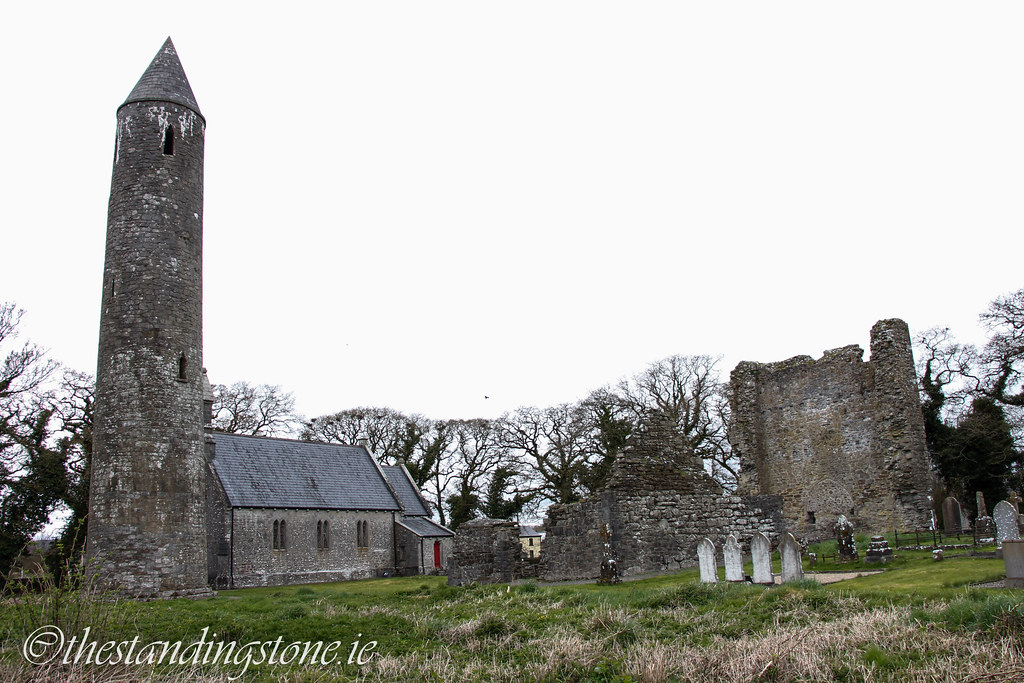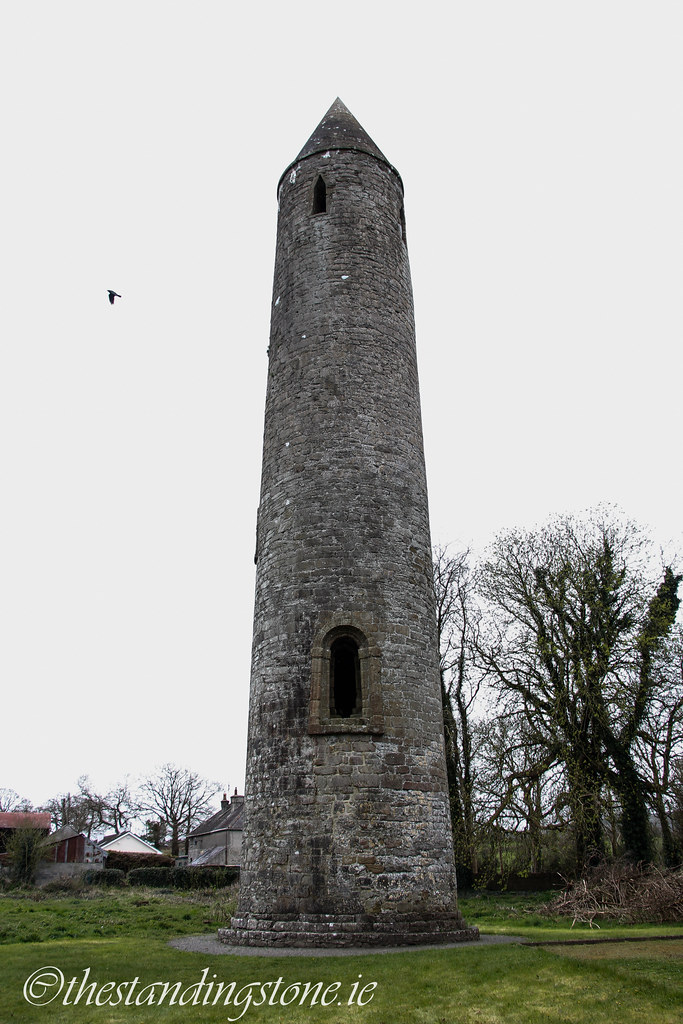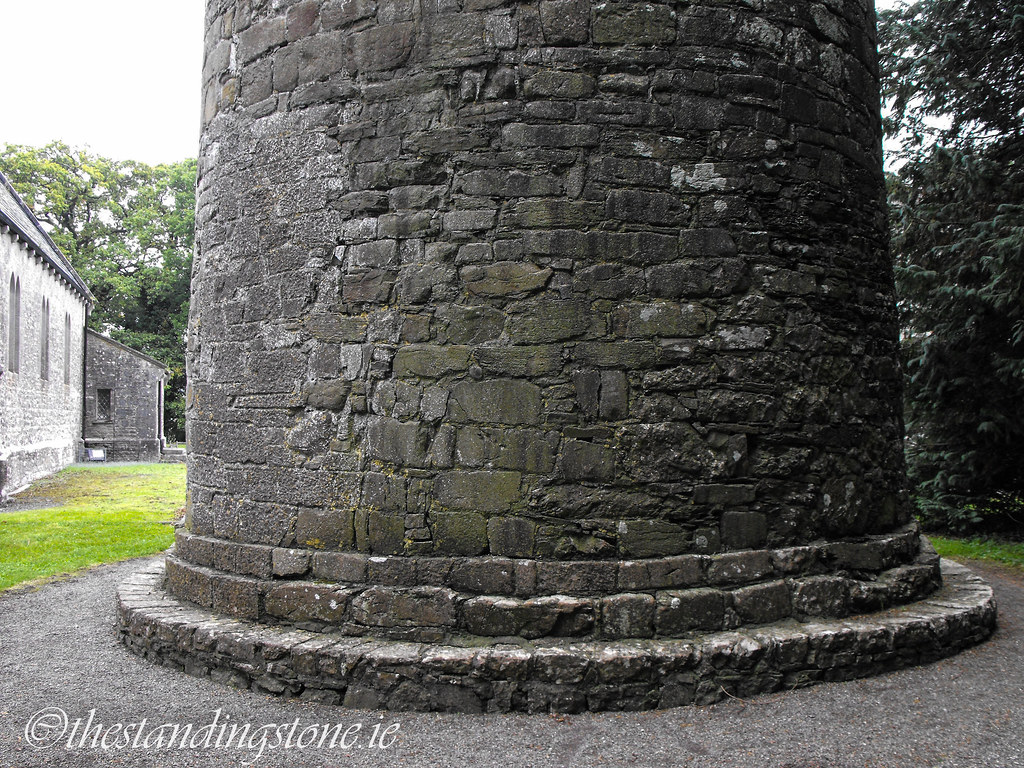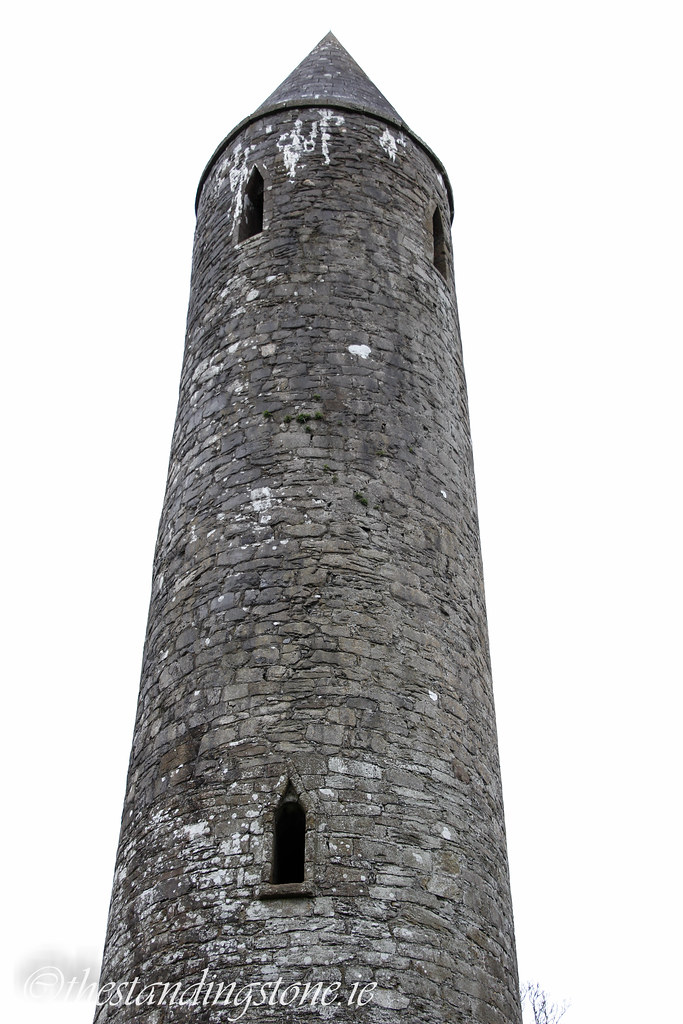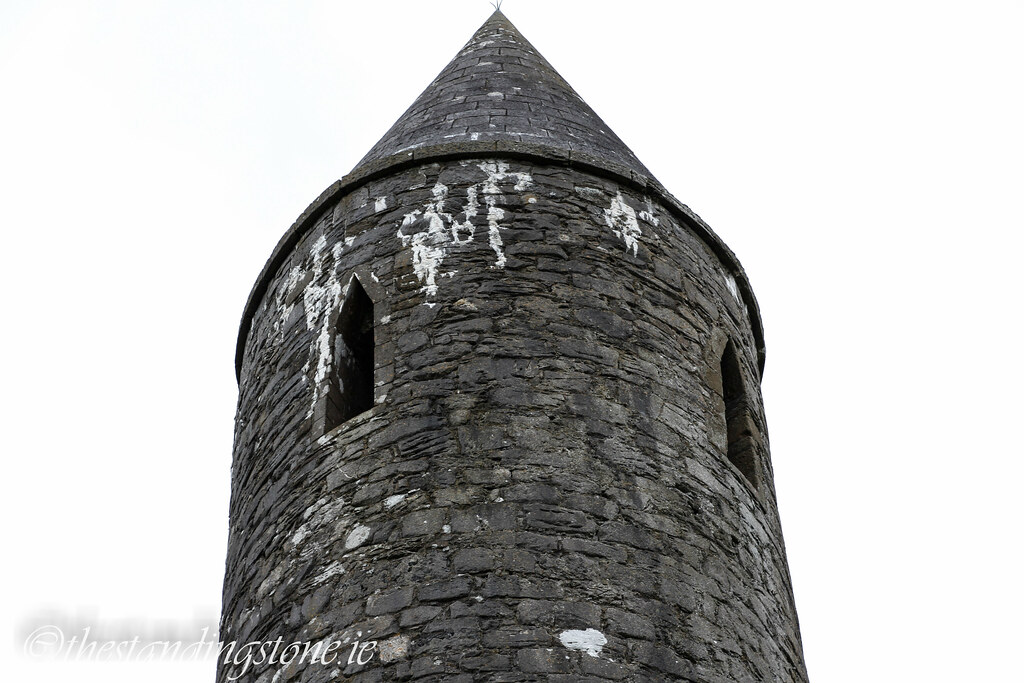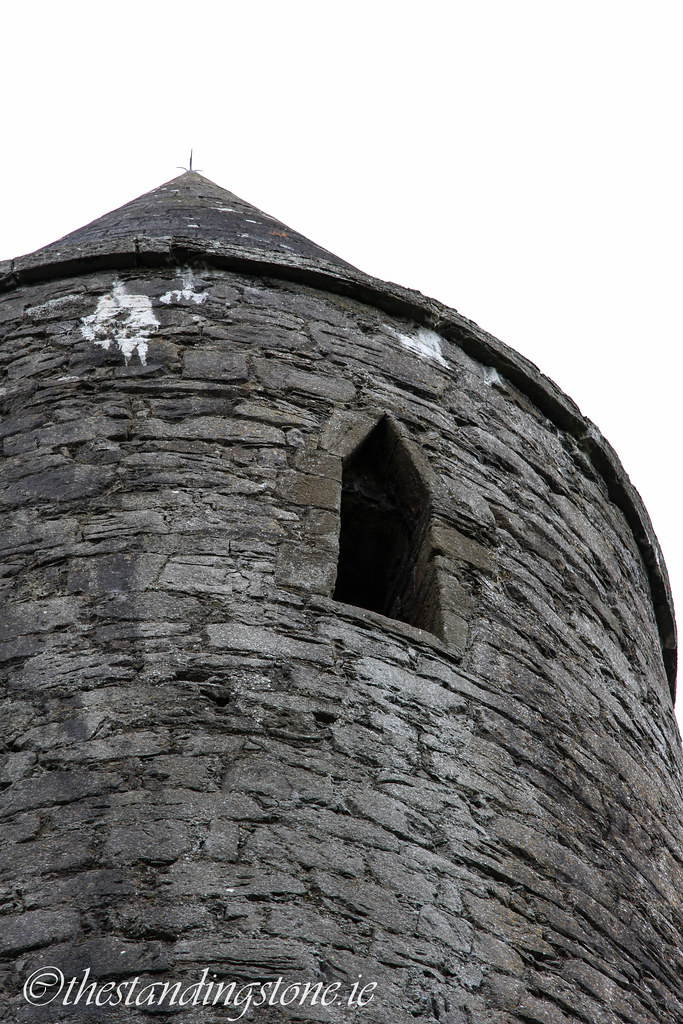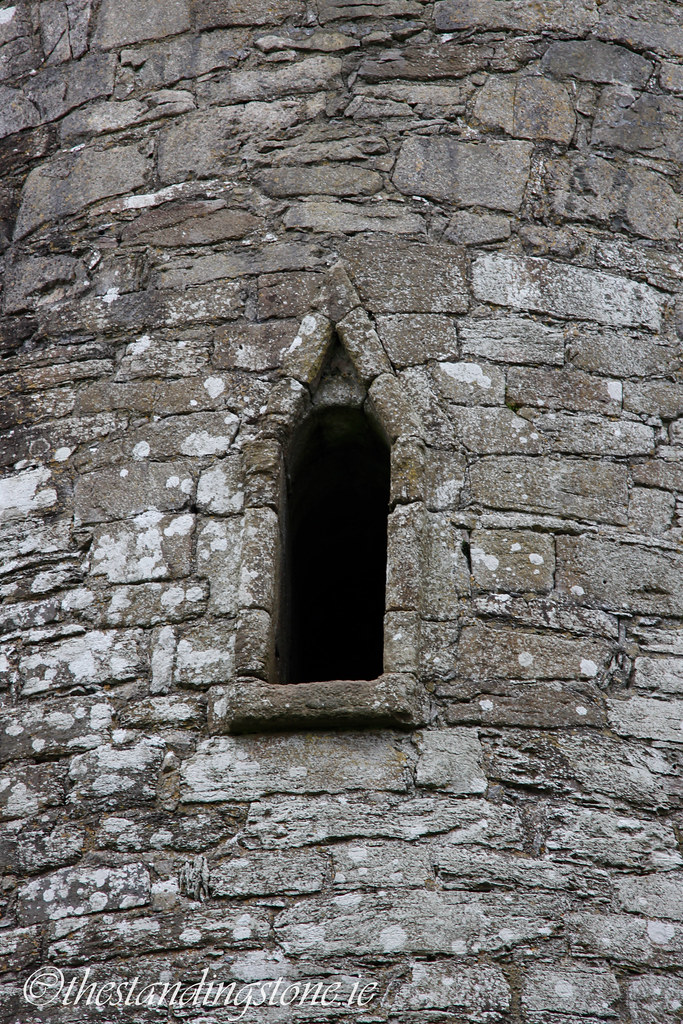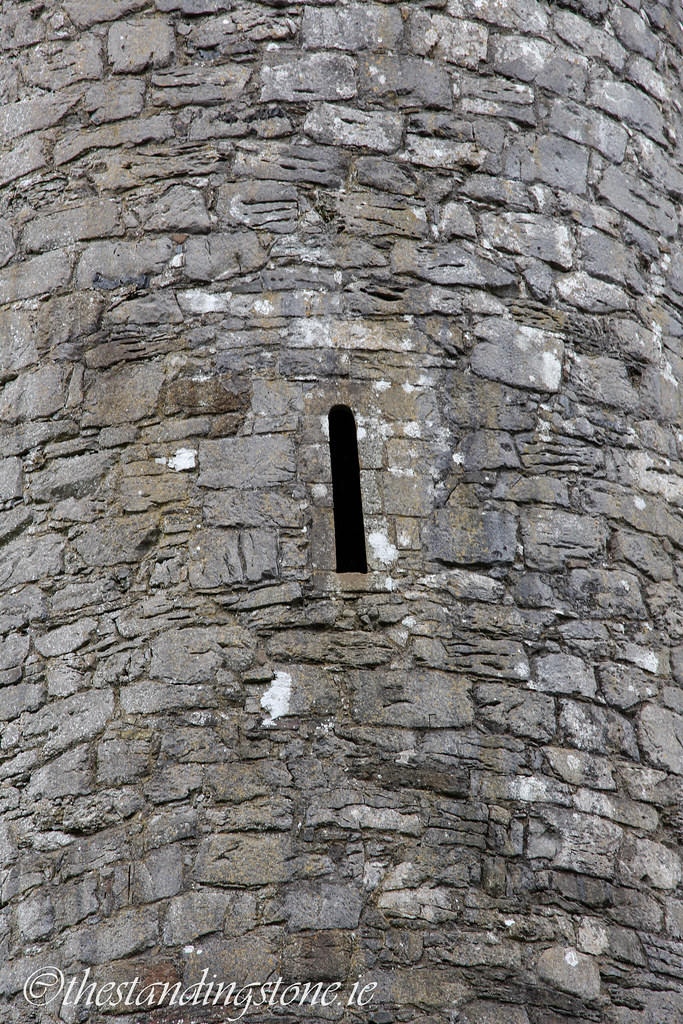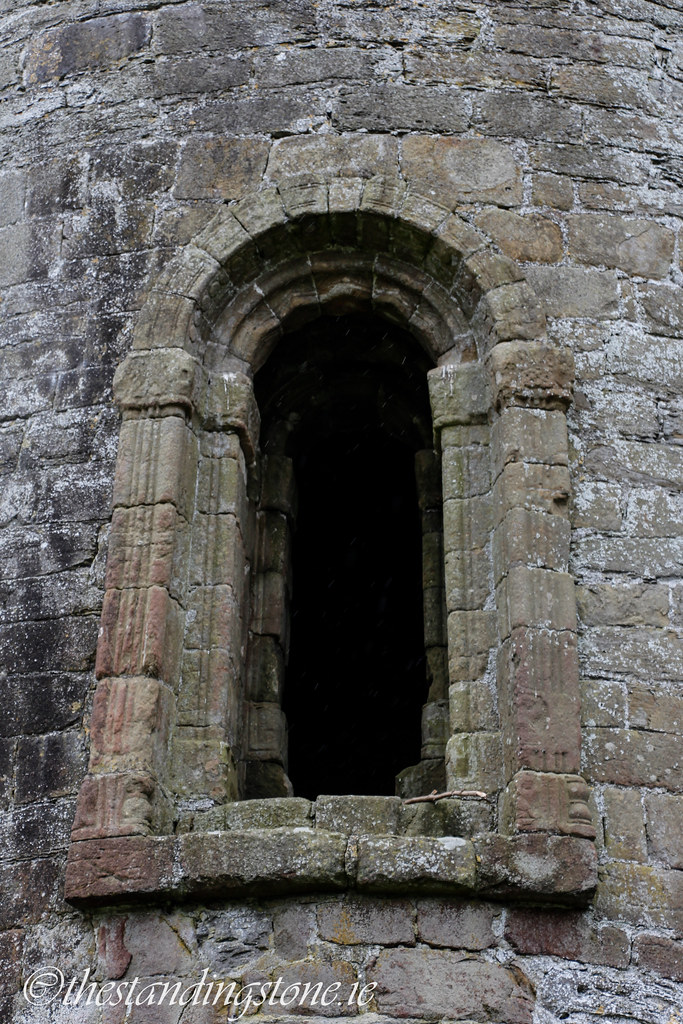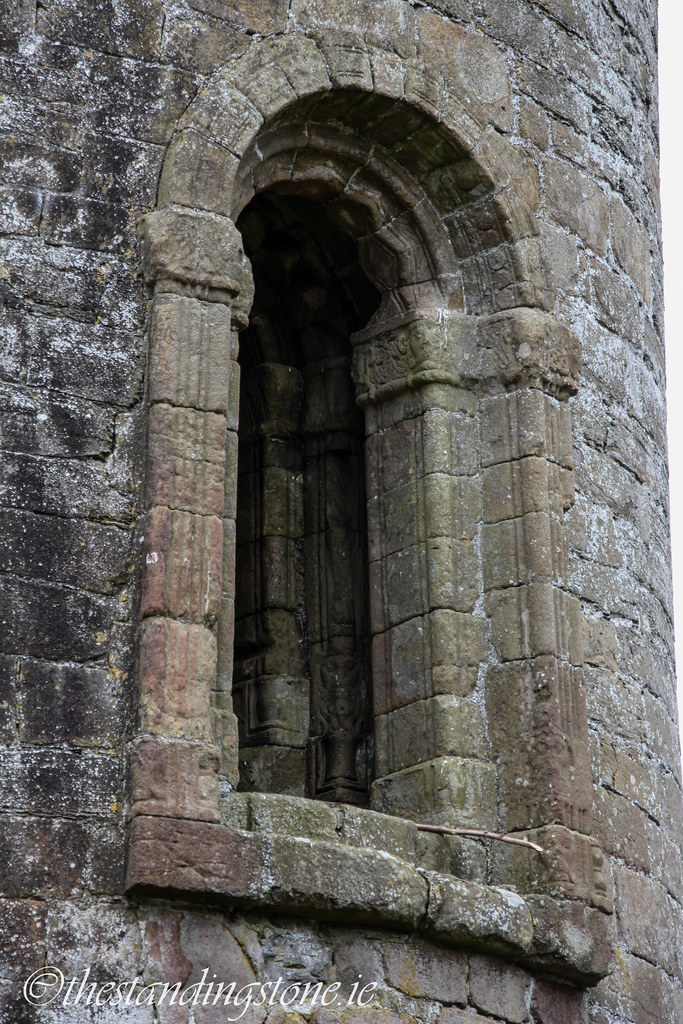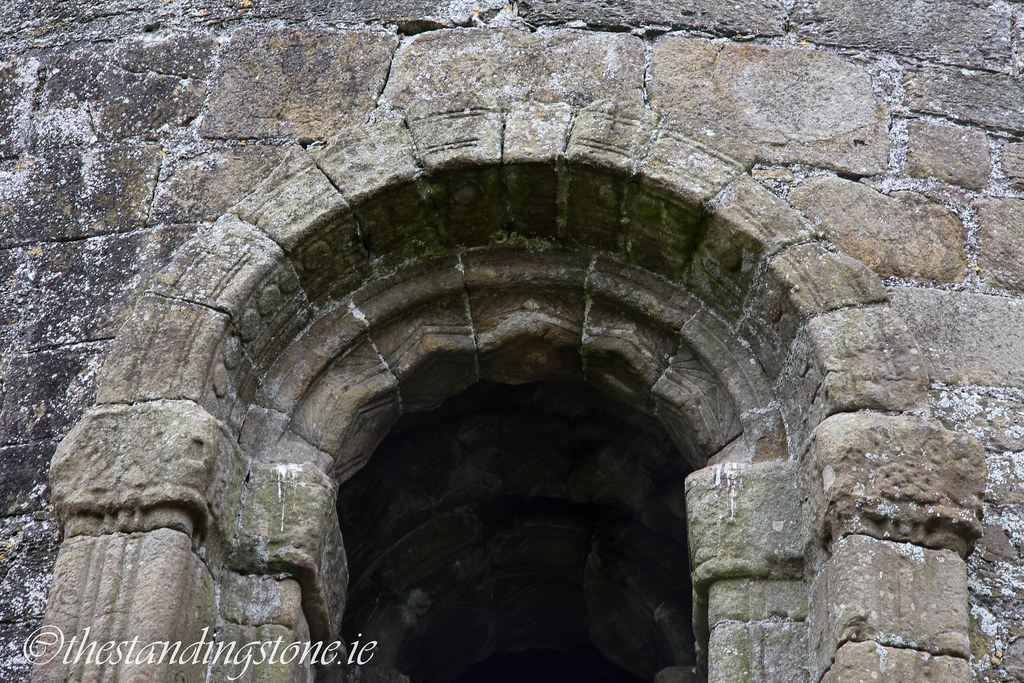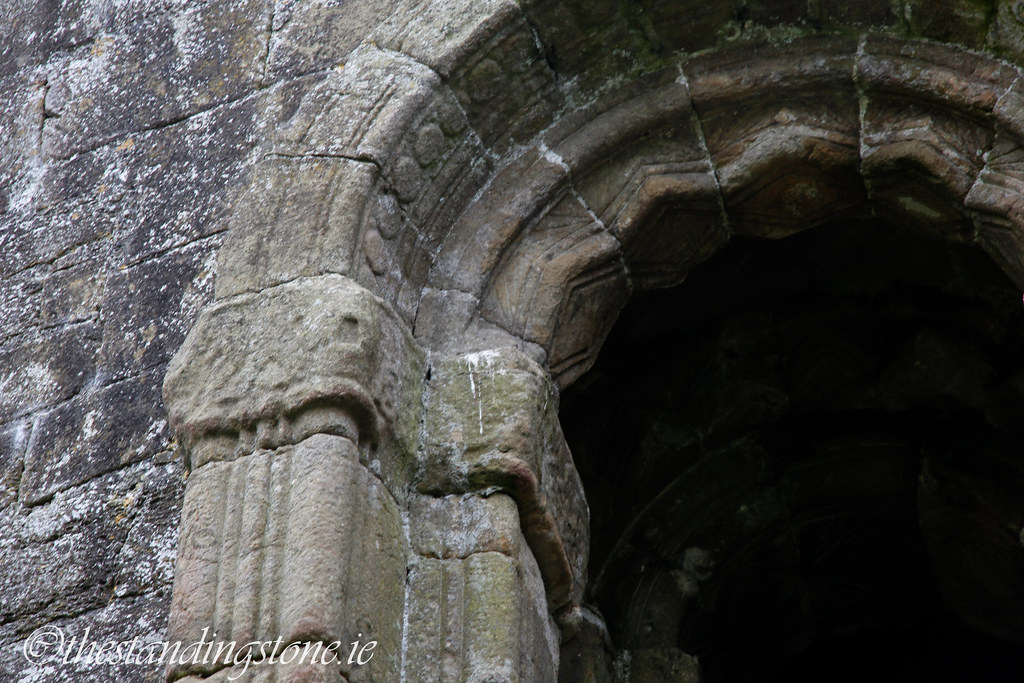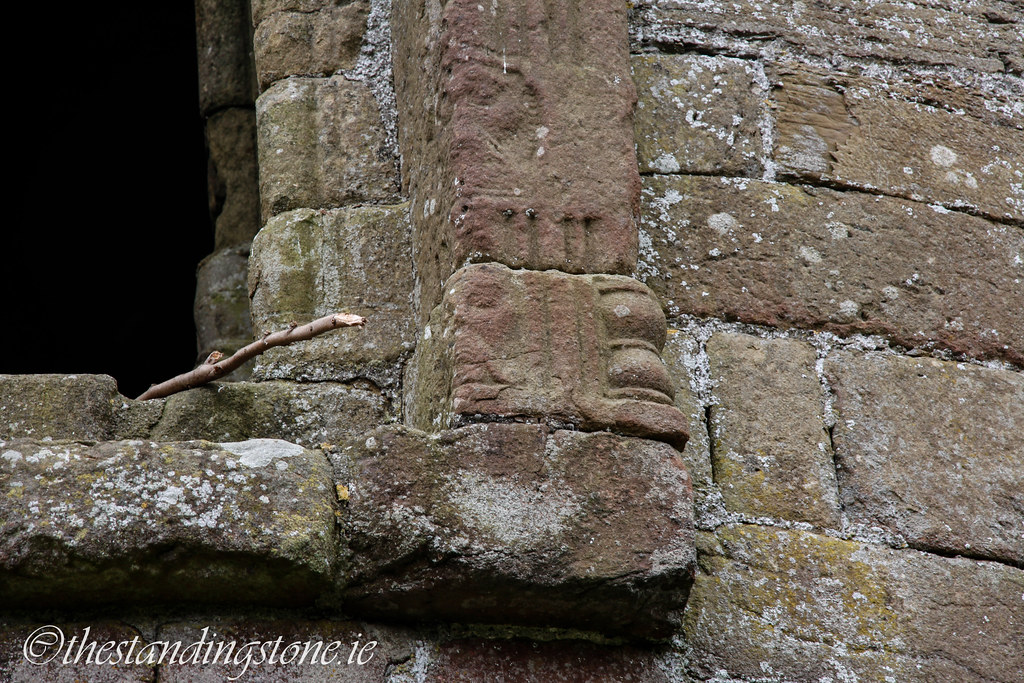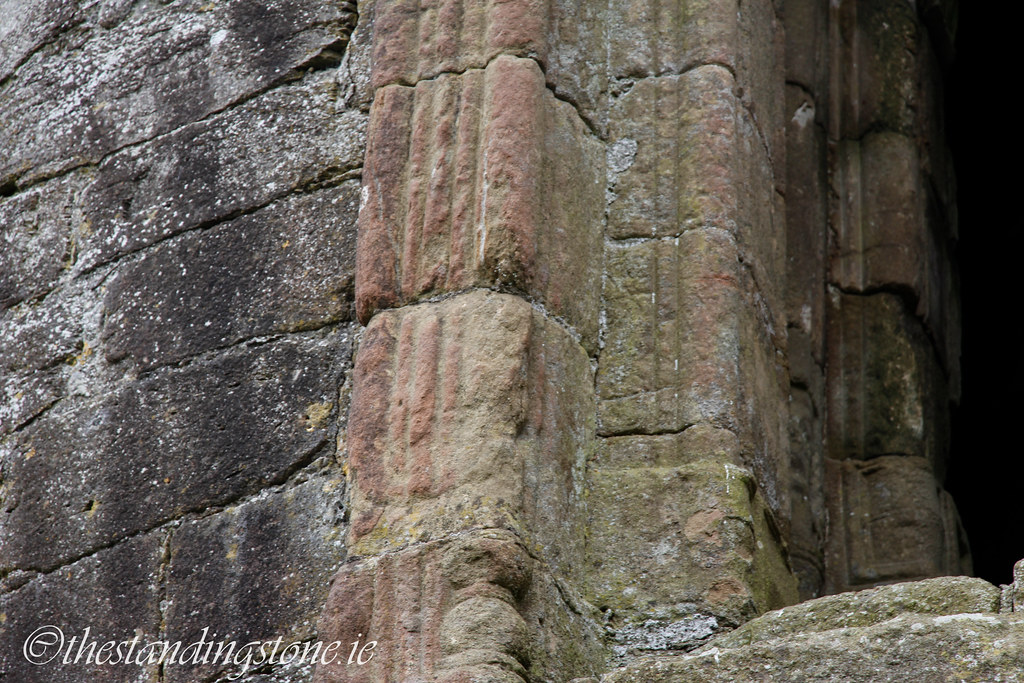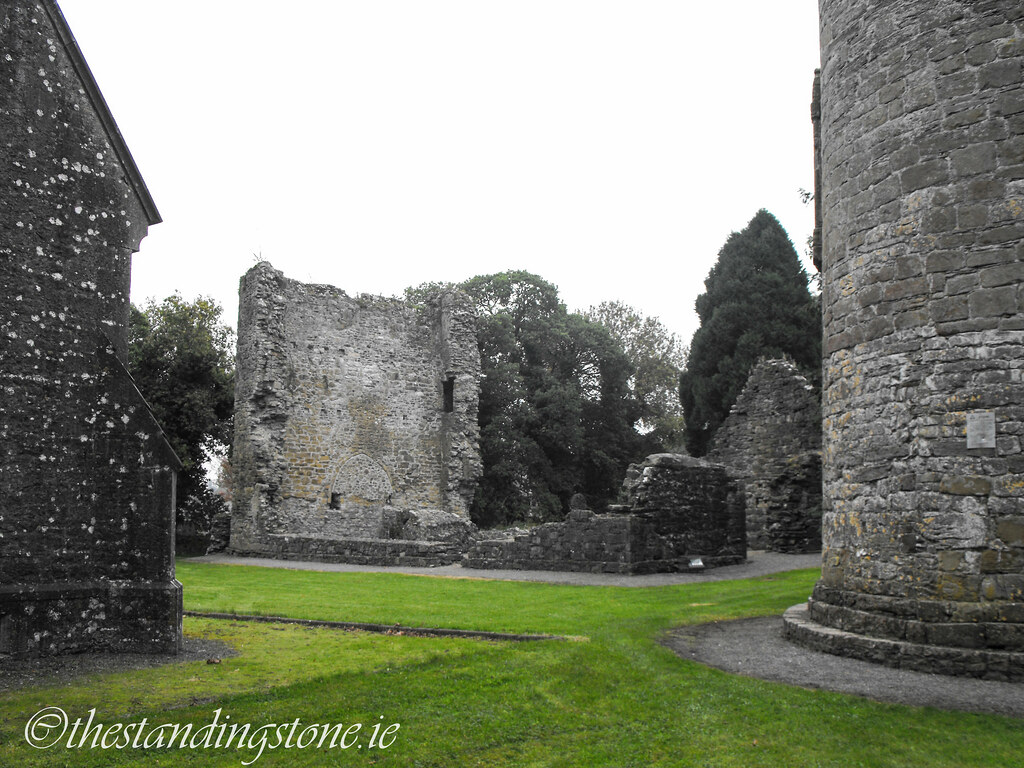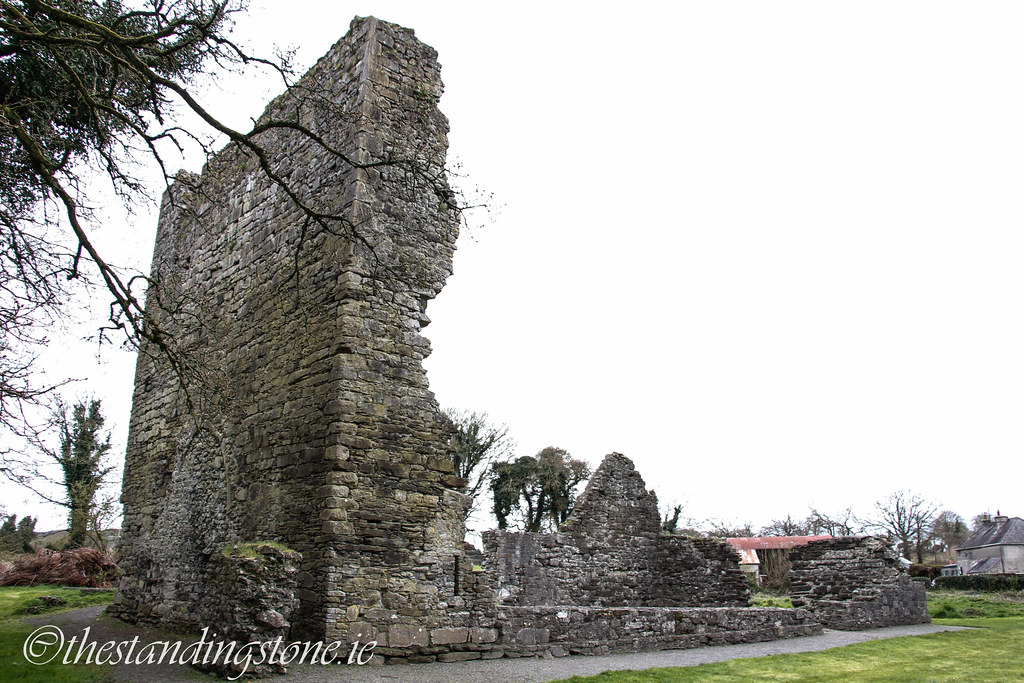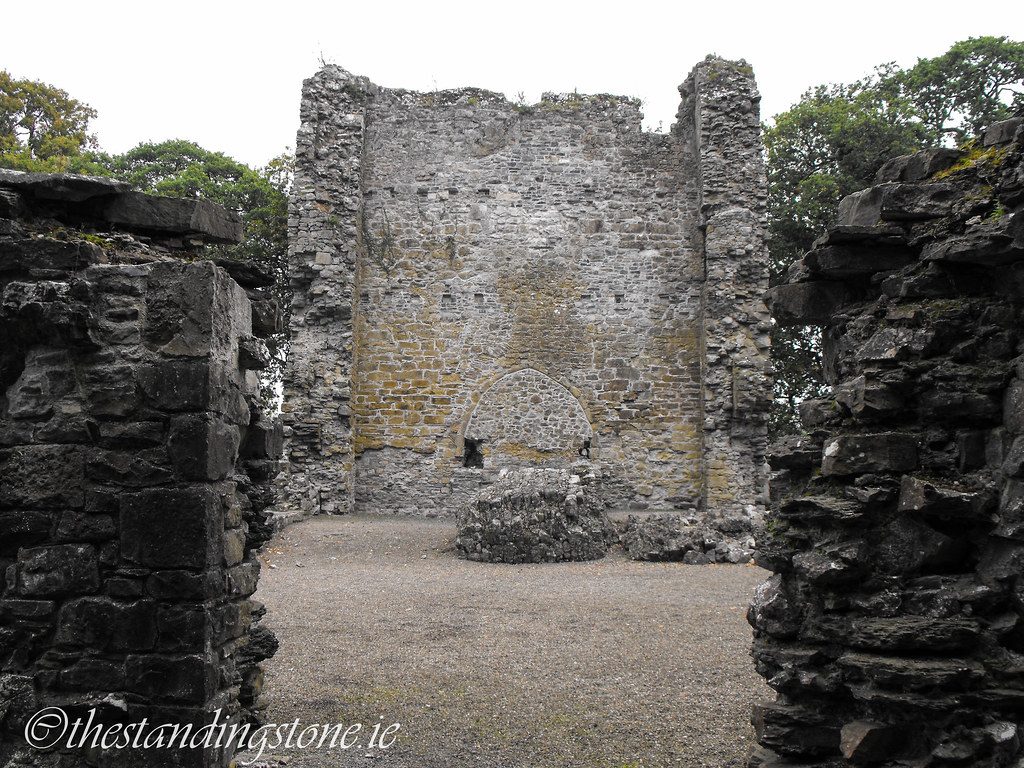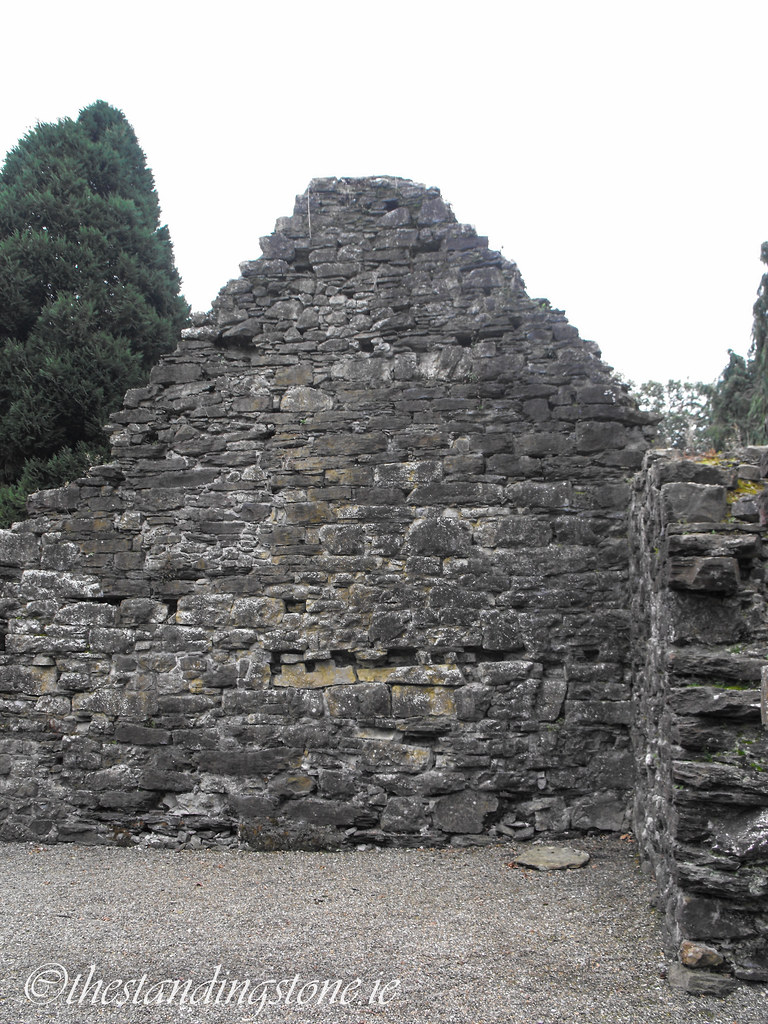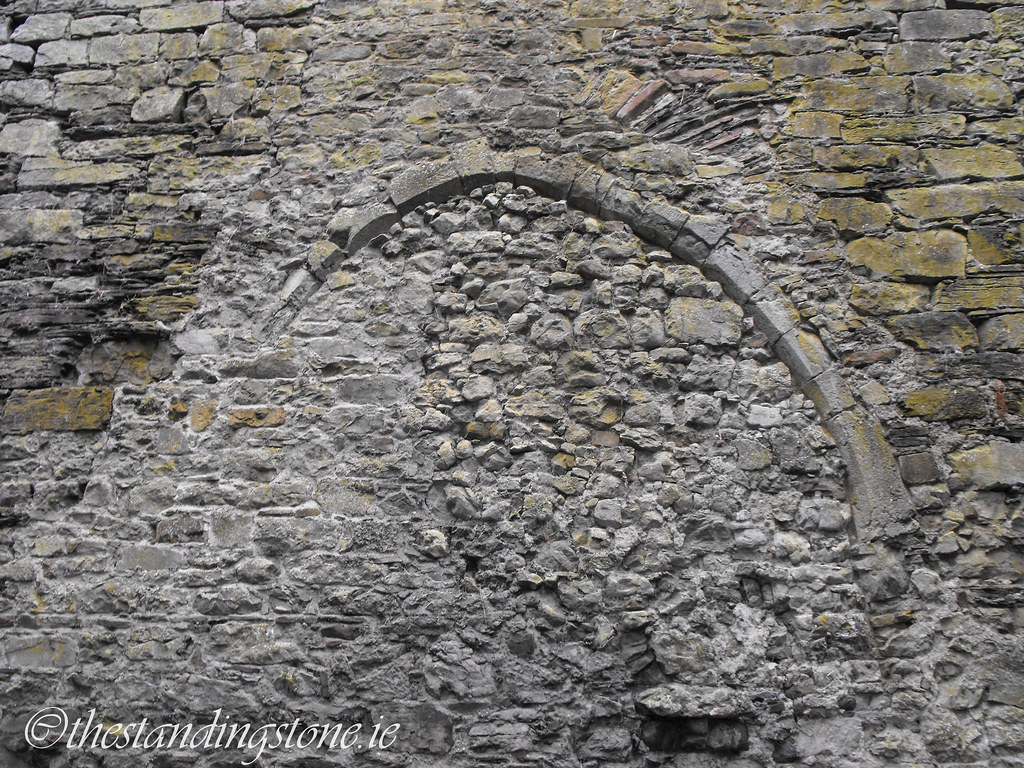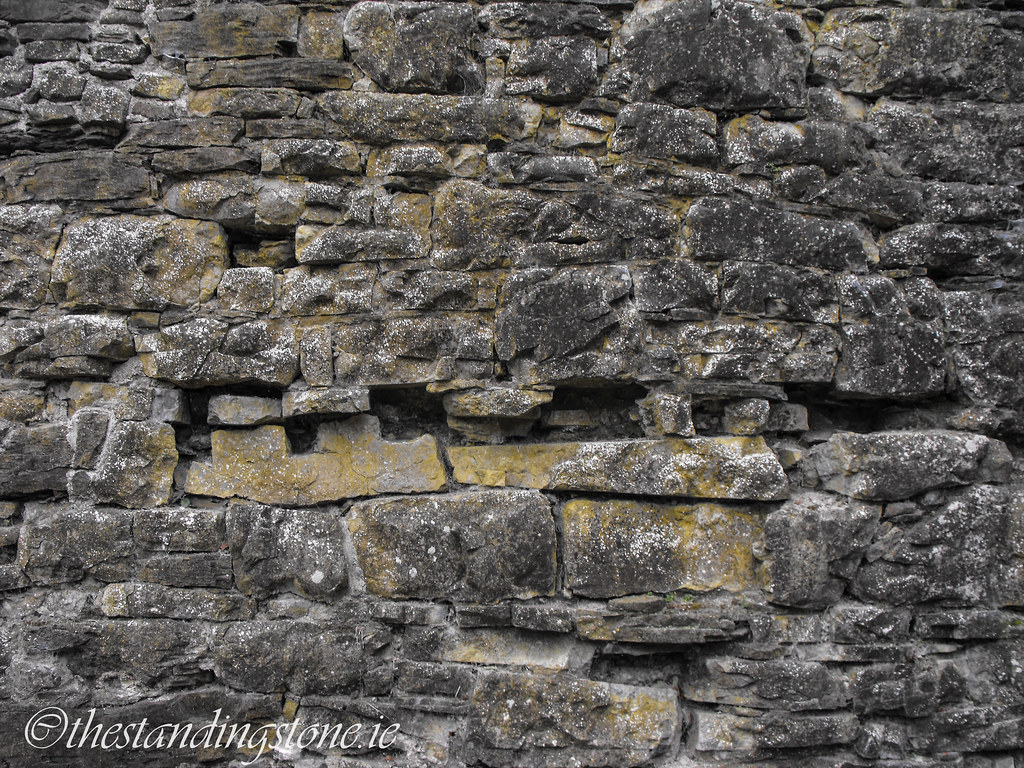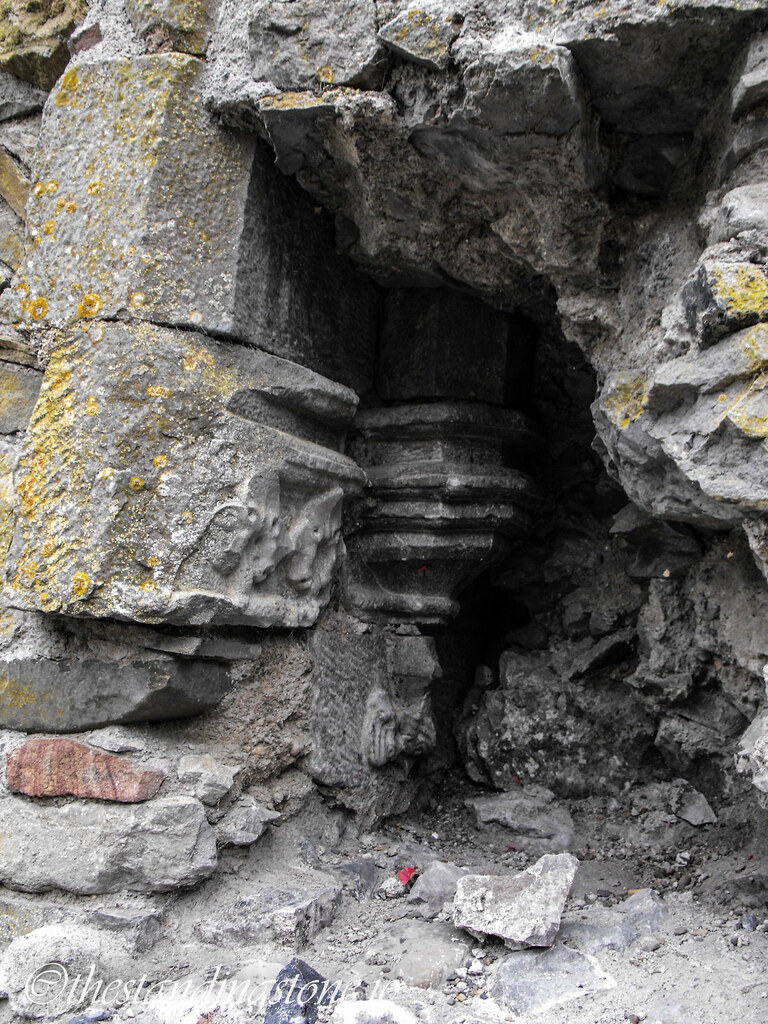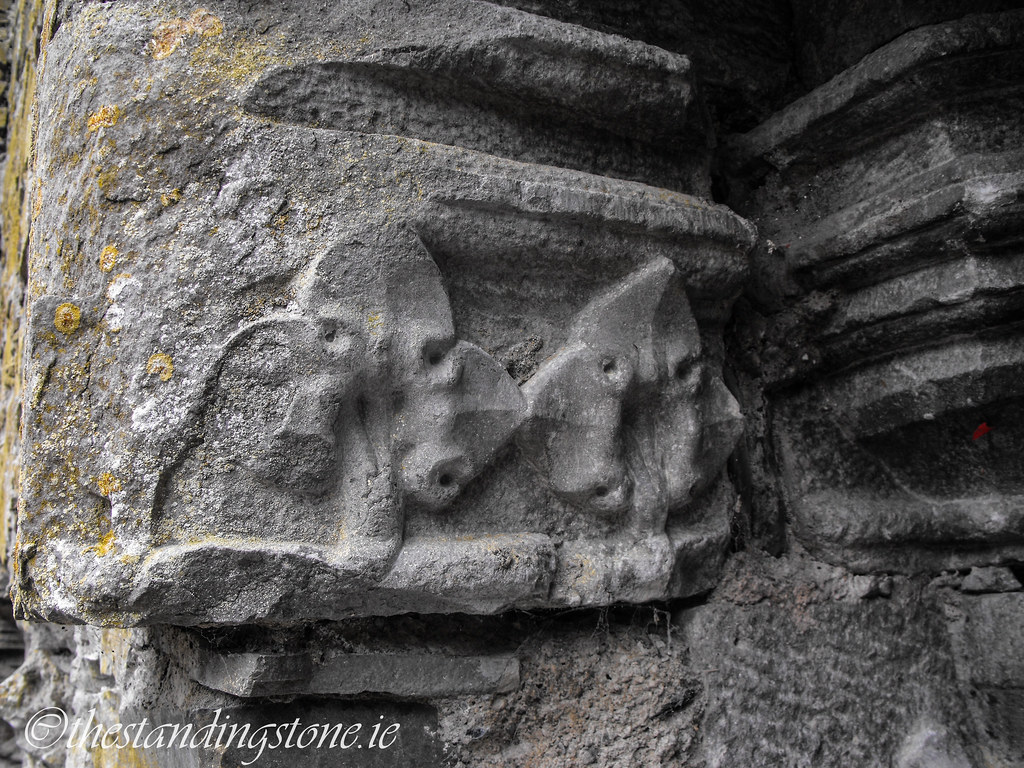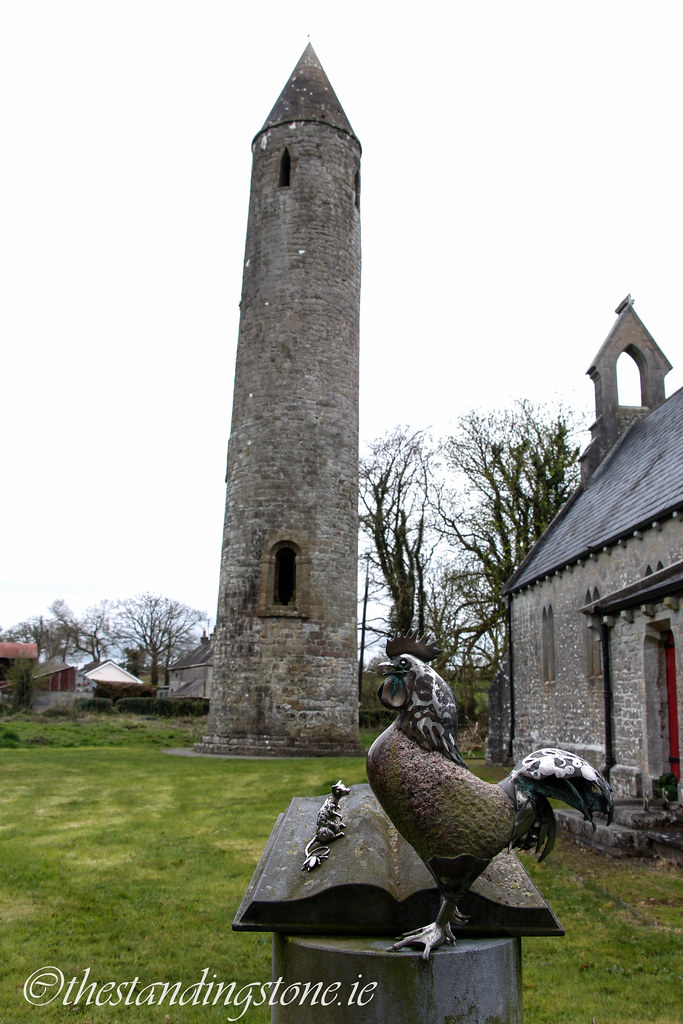Location – In Timahoe village, a few kilometres South of Portlaoise.
OS: S 535 902 (map 55)
GP: S 53525 90253 (Accuracy – 2m)
Longitude: 7° 12' 12.22" W
Latitude: 52° 57' 37.54" N
Description and History – Timahoe round tower is one of the finest examples of a round tower in the country and is the only remaining feature of an early ecclesiastical foundation. St. Mochua founded a monastery here in the 7th century which was plundered and burnt to the ground in 919 and 1142. In 1019 a priest is said to have been murdered in the doorway of the church. St. Mochua emerges as an interesting figure in early Irish Christian folklore. However, there are 58 Irish saints called St. Mochua so it is always possible that there is confusion over which tale belongs to which one. The son of Lonan, Mochua was originally from Achonry in Connaught and was a successful soldier before becoming a monk. According to folklore, Mochua lived at Timahoe as a hermit with only a rooster, a mouse and a fly. The rooster would ensure that Mochua never missed matins (morning prayers). The mouse would nibble his ear if he fell asleep to ensure he didn’t miss prayers during the day and night and the fly was walk along Mochua’s texts to make sure he never lost his spot. There is a modern piece of sculpture at the site called St. Mochua’s Desk which commemorates this tale. Miracles associated with Mochua include the healing of two fellow abbots, St Coleman of Elo and St. Fintan Munnu of memory loss and leprosy respectively.
In 880AD, according to the Annals of the Four Masters, Focarta, son of Dubhdacheall, was Abbot of Teach Mochua (Timahoe). The round tower itself dates to the 12th century (a rather late round tower) although the base could be earlier in date, suggesting that it was possibly built in two phases. This is suggested by the difference in building material used in the tower. The base of made of sandstone to a height of around three meters while the rest of the tower is made of limestone. In the later medieval period the O’Mores refounded the monastery but in 1609 it was granted to Richard Cosby. It was at this time that the medieval church was converted into a tower house.
The round tower stands six storeys high to a height of just below 30m and has a conical cap from the 1880s. The doorway, partway up the tower, is decorated in Hiberno-Irish Romanesque style with four orders with human heads with intertwining hair. The window at second floor level is decorated in a similar fashion, although this is a little more difficult to see at ground level. Internally there are no remaining floors. The similarities between the styles found at Timahoe and the nearby Killeshin church, suggest the same sculptor which would place the construction of the tower we see today at c1150AD.
The church/tower house structure is somewhat unusual because of its conversion. You can still see a large arch belonging to the medieval church with a fine decorated capital still visible. Only the East wall of the tower house survives to full height with small portions of the North and South wall still visible. A Sheela-na-gig is reported to have been located on the East wall of the castle, but this is now missing. It is possible that the figure is still located at the site under debris.
There is now a heritage centre at the site, details of which can be found on their Facebook page by clicking here.
Difficulty – Easy to get to and navigate.
For more castles, click here.
For more ecclesiastical sites, click here.
For more sites in Co. Laois, click here.
I think the lean in this photo is somewhat of an optical illusion as it doesn't appear to tilt as much in other photos.
You can clearly see here the difference in building materials used.
Beautifully carved window.
The Romanesque doorway is really quite something.
Looking towards the church/tower house structure.
Blocked up archway in the remaining wall.
Part of a floor-level.
Is there a sheela-na-gig under here?
Part of the blocked up archway has fallen away to expose the beautifully decorated capital from the church prior to its conversion to a tower house.
St. Mochua's Desk.

